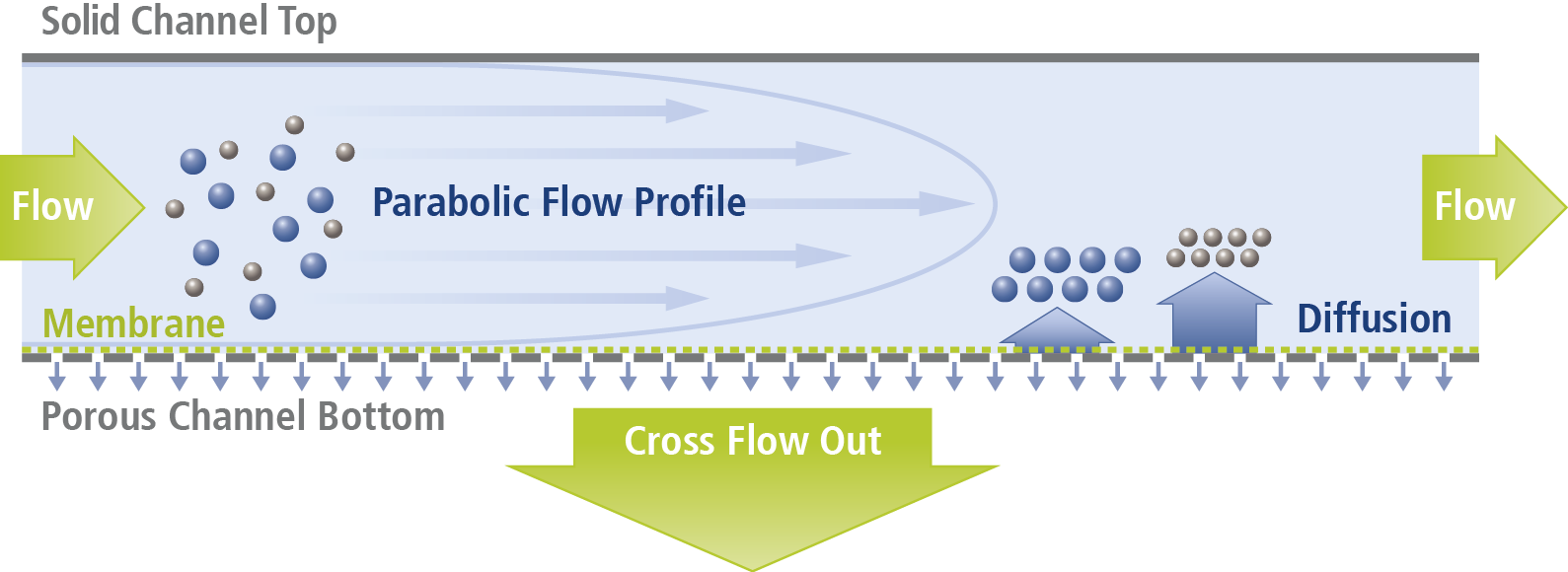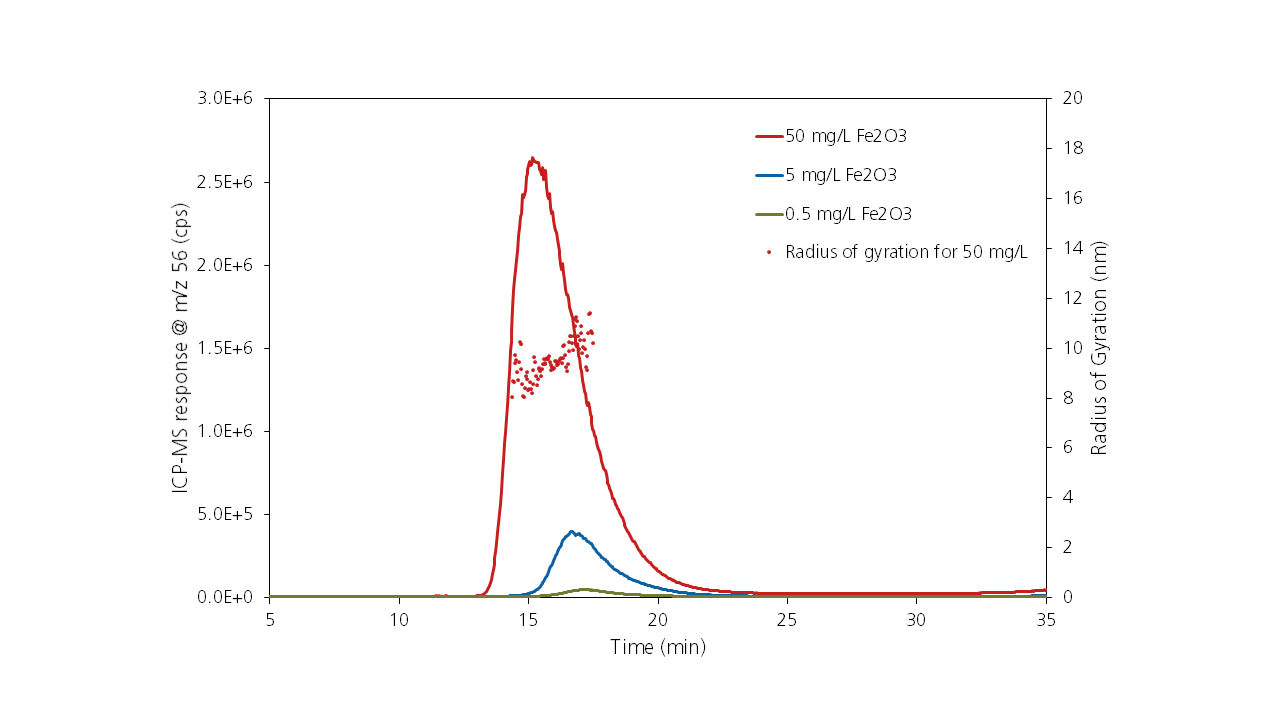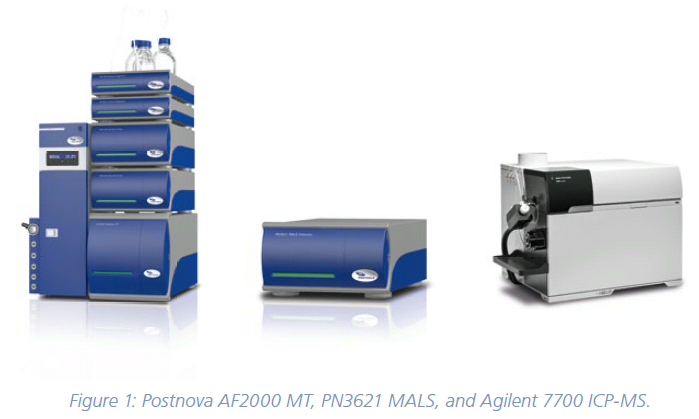Introduction
Solvents used in the semiconductor industry can be affected by a variety of contaminants, including metal nanoparticles (NPs). Three of the most commonly used organic solvents in the industry are propylene glycol monomethyl ether acetate (PGMEA), cyclohexanone, and propylene glycol monomethyl ether (PGME) [1]. In this Application Note, we present data on analysis of metal nanoparticles in organic solvents using Asymmetrical Flow Field-Flow Fractionation (AF4) coupled with Multi-Angle Light Scattering (MALS) and Inductively-Coupled Plasma Mass Spectrometry (ICP-MS) detection [2]. Measurement of the NPs’ size (i.e. radius of gyration) is also possible using MALS. A schematic for the AF4 channel is shown in Figure 2. The combination of cross flow and channel flow causes size separation over the course of the analysis, with smaller particles eluting to connected detectors before larger particles.

Experimental Details and Results
An iron oxide (Fe2O3) NP sample, 20 nm average diameter, was used for these experiments with cyclohexanone being both dispersant for the NP sample and mobile phase of the applied fractionation system. Analysis was performed using an AF4 (Postnova AF2000) coupled to a 21-angle MALS (PN3621) and an ICP-MS detector (Agilent 7900), equipped with the Agilent organic solvent sample introduction kit. While MALS enables access to the radius of gyration (Rg) of the NP sample, ICP-MS facilitates its size-resolved elemental identification and quantification. To estimate the AF4-ICP-MS detection limit for Fe2O3-NP, three concentrations were analysed (0.5 mg/L, 5 mg/L, and 50 mg/L) and the respective signal-to-noise ratio was calculated.

Figure 3 shows the ICP-MS 56Fe isotope response for the size-separated NP sample at three different concentrations. The size distribution is indicated by the Rg data, calculated from the MALS detector, plotted as red dots across the peak for the 50 mg/L concentration. The limit of detection (LOD) by AF4-ICP-MS was calculated to be 6.0 μg/L and the average determined Rg was 9.6 nm, equal to a diameter of 19.2 nm, very close to the NPs’ nominal 20 nm diameter.
Conclusion
In this study, we demonstrate the applicability of AF4-MALS-ICP-MS for trace level analysis of inorganic nanoparticles in organic solvents; in particular Fe2O3 nanoparticles in cyclohexanone (LOD: 6.0 μg/L). Although this work focused on cyclohexanone, this setup is also compatible with a wide range of further organic solvents, including PGME and PGMEA rendering it a powerful analytical tool for the investigation of particulate contaminants in semiconductor industry.
References
[1] S. Kim, C. Yoon, S. Ham, J. Park, O. Kwon, D. Park, S. Choi, S. Kim, K. Ha, W. Kim, 2018, International Journal of Occupational and Environmental Health, 24, 3-4, 109–118.
[2] R. Ruhland, K. Nwoko, M. Perez, J. Feldmann and E.M. Krupp, 2019, Analytical Chemistry, 91, 1, 1164-1170.


